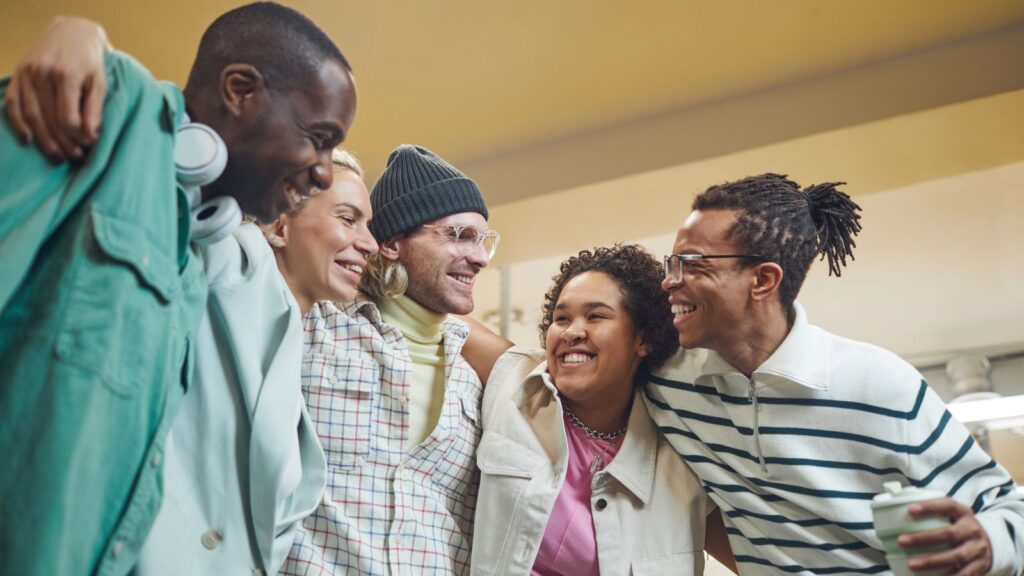
t’s easy to assume we’re all more connected than ever, given how quickly we can text, scroll, or tap someone’s name on a screen. But the irony is that while digital communication has multiplied, emotional connection has quietly thinned. People have become used to quick replies instead of meaningful check-ins, curated moments instead of shared ones. Yet recently, there’s been a subtle but noticeable cultural shift: people are beginning to crave the real thing again. The power of reconnection, whether with an old friend or a forgotten community, has started to reassert itself in our lives in ways that technology can’t fake.
Rediscovering What Matters Beyond the Feed
There’s a kind of honesty in reuniting with someone who remembers you from a time before everything was filtered and posted. When you talk to someone who knew you before adulthood’s noise kicked in, you feel something different. It’s not nostalgia exactly; it’s recognition. These connections often bring out pieces of ourselves that got buried under routines, responsibilities, and endless scrolling. We remember who we were when life felt more tactile, and that memory carries a quiet grounding effect.
People are beginning to realize that relationships need more than an algorithmic “suggested friend” list to survive. What makes human bonds powerful isn’t proximity or convenience, it’s intention. A real phone call, an unplanned visit, or even a simple handwritten note feels like an act of rebellion in an age that prizes efficiency over warmth. Each of these small gestures adds up, slowly rebuilding a sense of belonging that can’t be replaced by digital validation.
When The Human Element Matters
Reconnection works because the human element matters. It always has. There’s something irreplaceable about the way a familiar voice can reset your nervous system, or how a shared laugh over an old inside joke instantly bridges years of silence. Studies may track the mental health benefits of social bonds, but anyone who’s ever picked up the phone after years of distance already knows the science intuitively.
Finding old friends and reaching out can feel awkward at first, especially if time or pride has stretched the gap. Yet once you cross that hesitation, most people discover that relationships aren’t as fragile as they feared. The years might change people, but genuine affection rarely disappears. Sometimes all it takes is one brave message to start repairing something that was only paused, not broken.
What’s quietly happening on a larger scale is that people are valuing emotional fluency over constant communication. Being connected doesn’t mean you’re understood. Real reconnection requires presence, not perfection.
The Role Of Memory And Shared History
Memory is a strange kind of glue. It holds us close to those who once witnessed our earliest selves, even when we’ve drifted miles apart. Revisiting shared experiences with someone from your past often sparks insights that no self-help book could replicate. These exchanges remind us that we’ve been many versions of ourselves, and that growth doesn’t mean outgrowing everyone who knew us before.
There’s also an unspoken comfort in being known without explanation. Old friends understand the shorthand of your life. You don’t have to translate your humor, your quirks, or your silences. That ease doesn’t come around often, and when it does, it deserves to be nurtured.
How Technology Is Helping Us Find Each Other Again
Ironically, some of the same tools that caused emotional distance are now helping repair it. People are turning to search engines, archives, and old online directories to reconnect with classmates or long-lost friends. A simple college yearbook search can open the door to people who were once part of your daily world. It’s a reminder that technology isn’t inherently cold—it’s how we use it that decides whether it builds bridges or walls.
What’s different now is the intention behind it. Instead of scrolling aimlessly, people are using digital tools to revive real-world connection. They’re scheduling reunions, sending voice messages, even digging out old photos to share as icebreakers. Social media’s superficiality is slowly giving way to something more deliberate—a means to repair what got lost in translation when communication became too easy to mean much.
Reconnection As A Cultural Correction
If you look closely, this movement toward reconnection feels less like nostalgia and more like a quiet correction. People are starting to realize that busyness was never the same as closeness. The pandemic cracked open that illusion for many, exposing just how lonely constant contact can feel when it lacks substance. Since then, a lot of people have been rethinking what community really means and where they want to invest their time.
It’s not about returning to the past but about bringing forward what was good in it—the slowness, the patience, the effort. Reconnection teaches humility because it reminds you that relationships don’t maintain themselves. They need tending. They need forgiveness and sometimes a little courage to begin again.
The Power Of Starting Over
The beauty of reconnection lies in its simplicity. There’s no grand formula. You just reach out. Sometimes it works instantly; other times, it takes a few tries. But either way, you’re signaling something deeply human: I remember you. I value what we had. That acknowledgment carries weight in a world that often treats people as replaceable.
Every person you reconnect with adds texture back into your story. They remind you that your life isn’t just made up of new beginnings but also meaningful returns. And while it may sound poetic, there’s nothing abstract about it. It’s real, and it’s powerful, because it makes the world feel a little smaller, a little warmer, and a lot more human.
Lasting Bonds In A Transient World
Reconnection is a quiet force, but it’s reshaping how we think about relationships. The more we reach back, the more we realize that not everything meaningful needs to be new. Sometimes the most important connections are the ones that were waiting for us to remember them. In that rediscovery lies a kind of modern hope, that no matter how far we drift, the map back to belonging is always there, written in the memories we share.







